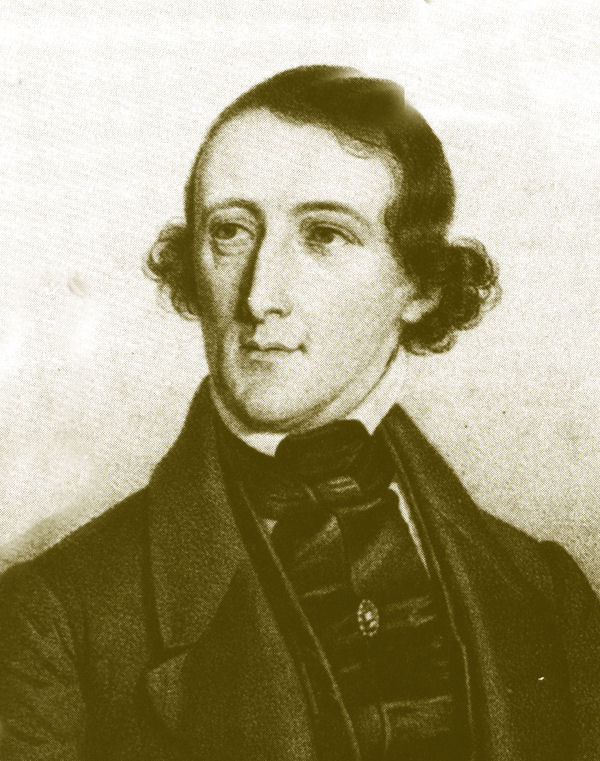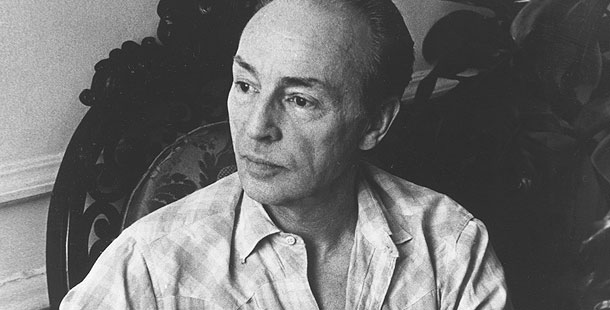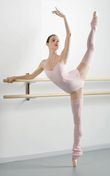Balanchine owes quite a lot to his Danish predecessor. Following Diaghilev’s death in 1929, and the subsequent dissolution of the Ballets Russes, Balanchine went to Copenhagen to be a guest ballet master with the Royal Danish Ballet. There he was introduced to Bournonville’s choreography and distinct style: the fast skimming jumps, the minimal port de bras, the elaborate
Balanchine clearly felt that Bournonville’s pedagogical system was important, for he hired renowned Danish teacher Stanley Williams to teach at the School of American Ballet in the 1960’s. Although Stanley had his own unique way of teaching, which was not exactly slavish to the Bournonville technique, he did incorporate several Bournonville elements. Stanley was an amazing instructor: gentle and soft-spoken yet very demanding. Talk about someone who communicated through movement alone! I loved his classes, and I feel honored to have been a part of the last generation that he taught.
Academically, one area in which Bournonville and Balanchine align is their approach to the most basic ballet step: the plié. At SAB, students are instructed to keep their weight in the balls of their feet at all times, even when in plié, so that at any moment someone could easily pass a slip of paper under their heels. This is because we move so quickly in the Balanchine style that keeping our weight on our toes—rather like basketball players—is the best way to make lightning-quick shifts in direction possible. It was purportedly Bournonville who invented this pounce-ready stance, although legend has it that this particular innovation stemmed from the fact that he had incredibly short Achilles tendons!
However, Balanchine rejected quite a bit of the Bournonville ethos outright. First of all, the Bournonville style is largely about decorum. It is polite dancing with low extensions and a pronounced un-flashiness. Balanchine wanted more! more! more! from his dancers at all times: more effort, more bending, higher legs, more energy, more risks. He was besotted with dancers like Suzanne Farrell who pushed themselves far off-balance and dared to fall over.
Also, in contrast to Balanchine’s preoccupation with supported pas de deux work, Bournonville’s choreography tends more towards gender parity. It contains very little partnering and tends towards egalitarian solo work. Balanchine famously said that “ballet is woman,” and he felt that the primary role of the male dancer was to show off his ballerina. (Although as usual there are exceptions to every pithy Balanchine quote, and he certainly created many iconic roles for men too: like Apollo, Prodigal Son, Square Dance, Melancholic and Phlegmatic in the Four Temperaments). The Bournonville methodology is undeniably light on partnering, but a reason for that was the rudimentary stage of the pointe shoe in the mid-1800’s. The shoes at the time had no supportive box, and therefore women were not truly “on pointe” in the same way as they are now (they were more on a 3/4 pointe). Nonetheless, I have never understood how the Bournonville school produced such a long line of incredible partners who came to perform with the NYCB: Peter Martins, Adam Luders, Peter Schaufuss, Ib Andersen (who was my teacher right before I went to SAB), Nikolaj Hubbe, and Nilas Martins. If anyone can explain it to me I’d be much obliged.
Balanchine, unlike Bournonville, mostly did away with plot in his ballets. “There are no mothers-in-law in ballet” is a classic Balanchine quote. Conversely, in La Sylphide one of only six principal cast members is the mother-in-law! La Sylphide has a funny lineup: there is James the hero, the titular Sylph, Madge the witch, Effie the jilted fiancée, Gurn the sidekick, and finally James’s mother (who seems much more interested in Effie than James ever does). But more than just mothers-in-law are important in Bournonville. It was surprising to me that Petrusjka Broholm, guest ballet mistress from the Royal Danish Ballet who staged our recent production, meticulously coached the smallest of acting moments for the ballet’s entire cast—including the children and supernumeraries. Every guest in the wedding party had a backstory and detailed characterization. Some of the ancillary characters even had names and identities that were not listed in the program. This was a serious departure for our company, and it was fascinating and inspiring to work so differently.
This is not to say that Balanchine is not a skilled storyteller. In my opinion he is one of the very best. We are doing A Midsummer’s Night’s Dream this week and I am always astounded by the economy with which Balanchine conveys Shakespeare’s convoluted plotlines. Balanchine wraps up the entire five act play in the first half of his ballet; the second act consists of a pure dance divertissement and a wedding ceremony. But there is something fundamentally different about his approach to ballet mime. Whereas the success of La Sylphide rests largely upon the acting and mime skills of its cast, Midsummer is almost fool-proof.
Maybe the reason for this is that the symbolism-laden Bournonville mime is more difficult for modern audiences to read. Bournonville mime is really an intricate form of stage sign language. Dancegoers today are not familiar with the stock gestures for such abstract concepts as revenge, wealth, bad omens, fortune-telling, beauty, etc. (I certainly wasn’t either before my recent foray into 19th Century signification). This arbitrary system is exactly what Balanchine was referring to with his mother-in-law statement. Today’s performers are under more pressure to speak across time and convey these theoretical ideas through gesture when resurrecting the old ballets. In contrast, in Balanchine’s acting scenes the movements are more naturalistic, and they connote less abstract terms—the gesticulatory signifiers of love and hate are pretty obvious to everyone!
Whatever the case, I have watched several casts in rehearsals for both Sylphide and Midsummer this season, and it seems to me that while acting chops and character shading greatly enhance a performance in Midsummer, a wan or less imaginative role interpretation does not make or break the whole show. I suppose it is lucky that we had months of coaching with the incredible Ms. Broholm for Sylphide, because we have had basically none for Midsummer this time around! Hopefully we will be carried along by our recent Bournonville boot camp experience.
But conflicting styles of mime aside, Bournonville’s touch is evident in Balanchine’s Midsummer nonetheless. During this afternoon’s rehearsal, I was amazed by Bournonville’s influence on Oberon’s solo in the Scherzo. It is probably Balanchine’s most intricate batterie choreography. The dancers portraying Oberon must hold their arms down, en bas, while their legs beat madly. Nearly every passage ends with an exposed, unforgiving pirouette of some sort too—just like in Bournonville choreography. Perhaps it is not surprising that all four Jameses and one Gurn from our recent Sylphide run are cast in the role of Oberon in Midsummer this week.
I think it is funny how certain places are linked up and imbued with a kind of magic in terms of artistic creation. I am not sure who exactly is the Kevin Bacon figure here, but there are only a few degrees of separation between the founding fathers of ballet. Bournonville trained with Auguste Vestris in Paris, just as Marius Petipa (1818-1910) did after him (before Petipa returned to St. Petersburg and reinvented ballet there). Lucille Grahn, who portrayed the original Sylph in Bournonville’s production, would go on to be a muse for Jules Perrot (of Pas de Quatre fame) who would in turn go to Russia to work as a ballet master while Petipa was a dancer there.
Petipa and Bournonville are opposite ends of one spectrum, and Balanchine would borrow from both of them when he came up with his own particular brand of neoclassicism. As I have explained, Balanchine made his own St. Petersburg—Paris—Copenhagen—NYC trajectory. Denmark remains fertile ground in the dance world—Alexei Ratmansky, arguably the world’s hottest choreographer—passed through the ranks of the Royal Danish Ballet for a spell too before spearheading the Bolshoi and ultimately moving to NY. For ballet, France, Russia, Denmark, and NY seem to be just as much part of a mystical pantheon as the enchanted forest of A Midsummer Night’s Dream or the supernaturally sylvan glen of La Sylphide.



 RSS Feed
RSS Feed